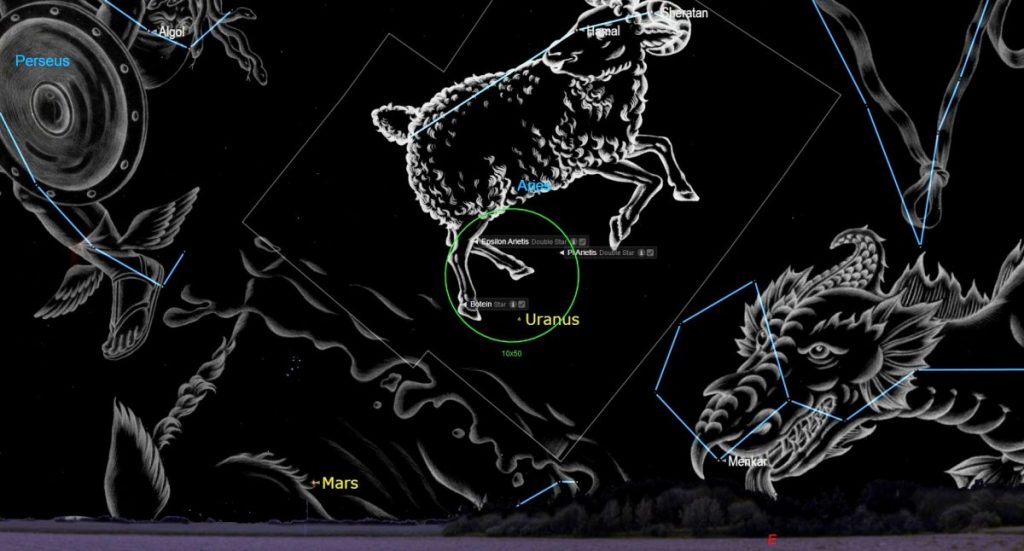
Uranus will reverse its path in the sky on Wednesday (Aug 24). Here’s how to see it (Image Credit: Space.com)
Uranus will reverse its eastward movement Wednesday (Aug. 24) and begin its westward path across the night sky.
“On Wednesday, August 24, Uranus‘ easterly motion across the stars of southeastern Aries will slow to a stop as it prepares to commence a westward retrograde loop that will last until January, 2023,” writes geophysicist Chris Vaughan, amateur astronomer with SkySafari Software who oversees Space.com’s Night Sky calendar.
This change in direction is a phenomenon known as retrograde motion. All of the solar system’s outer planets periodically undergo this type of movement a few months before they reach opposition, according to the skywatching website In-The-Sky.org (opens in new tab).
Related: The brightest planets in August’s night sky: How to see them (and when)
Uranus will enter retrograde motion at 9:40 p.m. EDT (1340 GMT). Although Uranus is visible to the naked eye, skywatchers will get a better view of the blue-green ice giant planet using binoculars, according to Vaughan. Look to the southeastern sky between 10:46 p.m. and 5 a.m. EDT, when Uranus will be above the horizon before dawn. Viewers can use the stars in the constellation of Aries to spot the ringed planet.
“Uranus will be sitting at the bottom corner of a box formed by the 4th and 5th magnitude stars Botein or Delta Arietis, Epsilon Arietis, and Pi Arietis — creating a distinctive asterism for anyone viewing Uranus,” Vaughan wrote in this month’s sky map.
Retrograde motion, or “backward” movement, is caused by the Earth’s motion around the sun, such that as the Earth orbits the sun, our perspective on Earth changes, causing the apparent position of objects like the planets in our solar system to move from side to side throughout the year.
“This motion was known to ancient observers, and it troubled them as they could not reconcile it with models in which the planets moved in uniform circular orbits around the Earth, as they believed,” according to In-The-Sky.org.
The further a planet is located from the sun, the longer it spends in retrograde motion. Uranus, the seventh planet from the sun, will continue its retrograde motion until Jan. 22, 2023.

Looking for a telescope to see Uranus? We recommend the Celestron Astro Fi 102 (opens in new tab) as the top pick in our best beginner’s telescope guide.
Following its direction reversal, Uranus will reach its highest point in the sky four minutes earlier each night, becoming more visible to skywatchers. The planet will continue this gradual climb until it reaches opposition, when it lies on the opposite side of the sky from the sun, on Nov. 9.
If you’re looking for a telescope or binoculars to observe Uranus’ retrograde motion, or another upcoming skywatching event, our guides for the best binoculars deals and the best telescope deals can help. Our best cameras for astrophotography and best lenses for astrophotography can also help you prepare to capture the next skywatching sight on your own.
Follow Samantha Mathewson on Twitter @Sam_Ashley13 (opens in new tab). Follow us on Twitter @Spacedotcom (opens in new tab) or on Facebook (opens in new tab).





